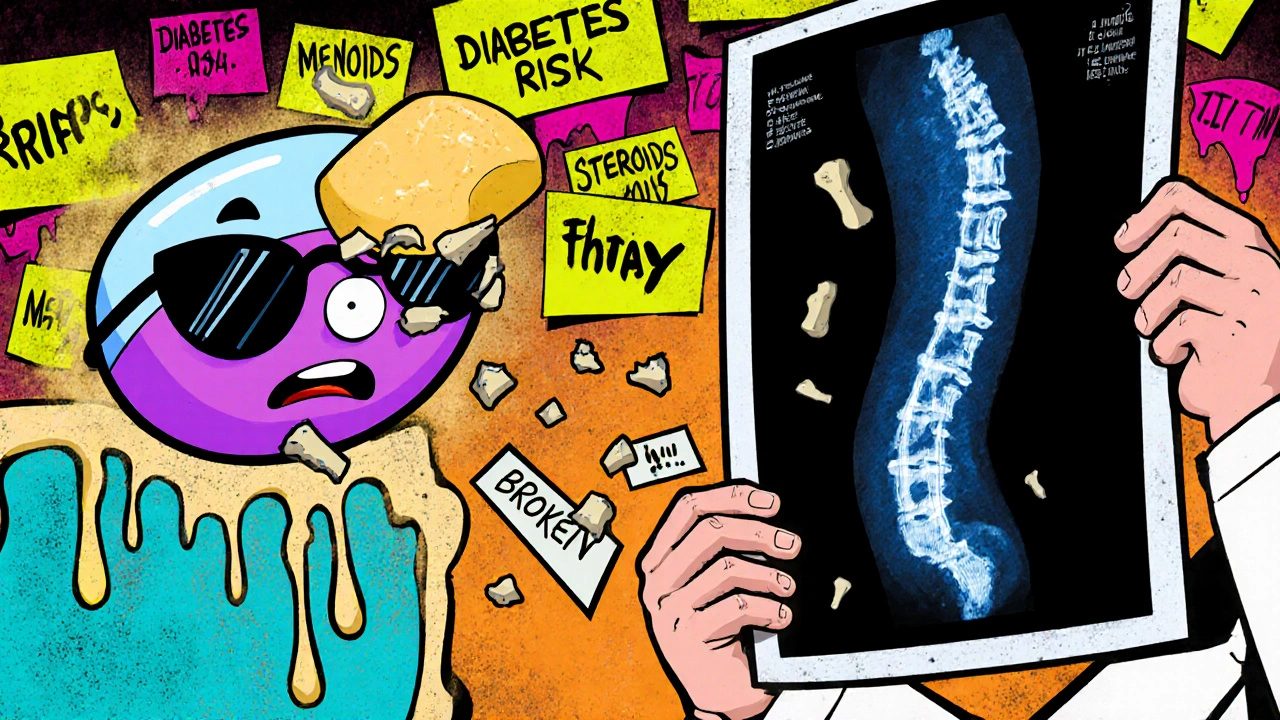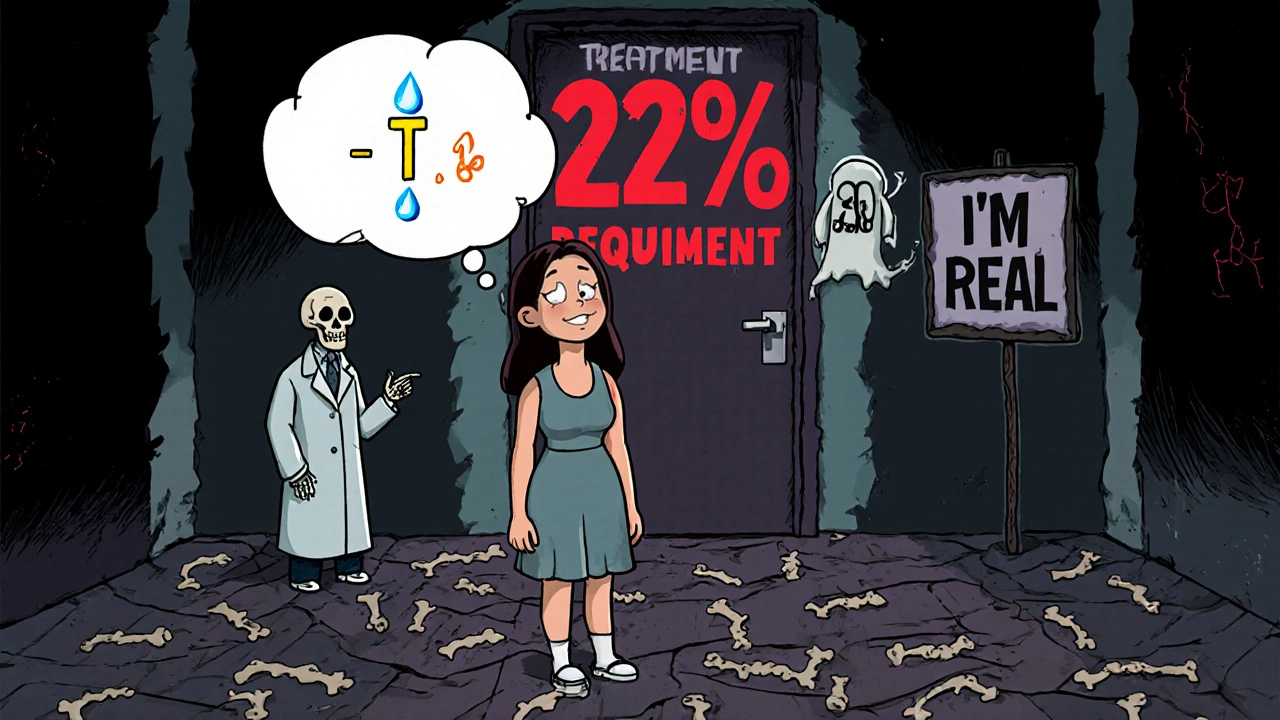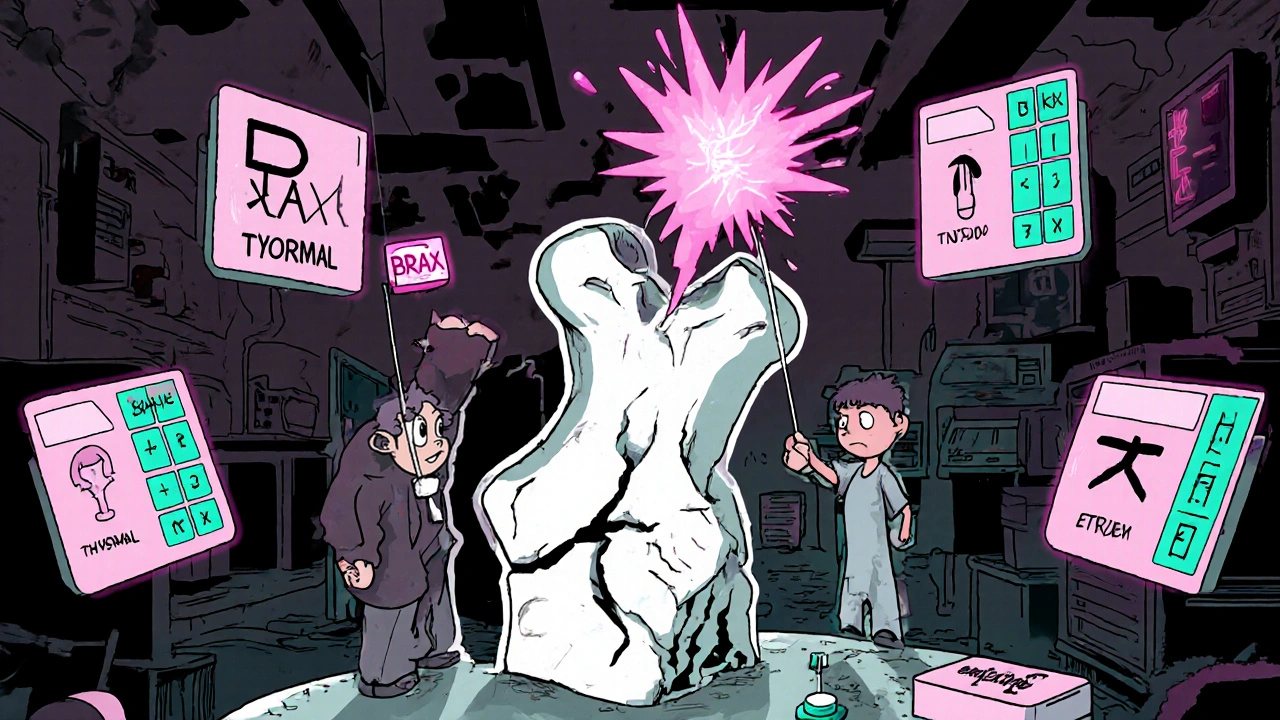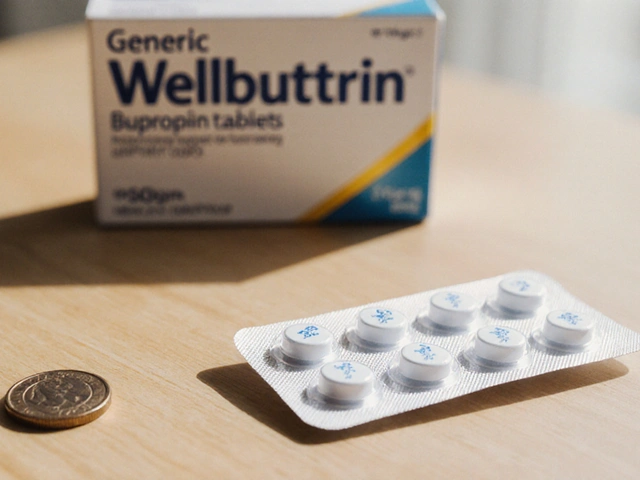When your hormones are out of balance, your bones pay the price. That’s not just a saying-it’s science. People with endocrine disorders like type 1 diabetes, untreated hyperthyroidism, or hypogonadism don’t just face blood sugar swings or weight changes. They’re at a much higher risk of breaking bones from minor falls-or even just standing up wrong. And here’s the catch: their bone density scans might look normal. That’s why relying only on a DEXA scan can miss the real danger.
Why Endocrine Disorders Break Bones
Your skeleton isn’t just a static structure. It’s alive, constantly being rebuilt by cells called osteoblasts and broken down by osteoclasts. Hormones control this balance. When something goes wrong in your endocrine system-your thyroid, pancreas, ovaries, testes, or adrenal glands-that balance shatters. Take type 1 diabetes. People with this condition have a 6 to 7 times higher risk of fracture, even when their bone mineral density (BMD) is perfectly normal. Why? High blood sugar damages collagen in bone, reduces bone quality, and impairs healing. The bone may look dense on a scan, but it’s brittle inside. Untreated hyperthyroidism is another silent thief. Too much thyroid hormone speeds up bone turnover. Bone breaks down faster than it rebuilds. Studies show even mild, undiagnosed hyperthyroidism can increase fracture risk by 15-20%. And in men on androgen deprivation therapy for prostate cancer, or women who go through early menopause before 45, bone loss can hit 2-4% per year. That’s faster than most people lose bone after 70. These aren’t random side effects. They’re direct, well-documented consequences of hormonal disruption. And they demand more than just a BMD number.FRAX: The Tool That Sees Beyond the Scan
Enter FRAX. Developed by the University of Sheffield and used in over 120 countries, FRAX isn’t a machine. It’s a free, web-based calculator that estimates your 10-year risk of a major osteoporotic fracture-or a hip fracture specifically. It doesn’t need fancy equipment. Just answers to a few questions. FRAX asks for age, sex, body weight, whether you’ve had a prior fracture, if your parents had hip fractures, if you smoke, drink more than three alcoholic drinks a day, use steroids, or have rheumatoid arthritis. For endocrine patients, it also includes their diagnosis as a risk factor. But here’s the key: FRAX works best when it has your bone density score from a DEXA scan. Without it, FRAX gives you a baseline. With it, it becomes powerful. For example, a 65-year-old white woman with a BMI of 25 and no other risk factors has a 1.3% chance of a hip fracture in 10 years-low enough to watch and wait. But if she has type 1 diabetes, that risk jumps. FRAX doesn’t fully capture that jump yet, which is a known flaw. The NIH and American Association of Clinical Endocrinologists (AACE) agree: FRAX should be used before ordering a DEXA scan in people with endocrine disease. If your FRAX score without BMD is over 9.3%, you should get scanned. If it’s below that, you might not need one-yet. And here’s the twist: FRAX underestimates fracture risk in type 1 diabetes by about 30%. That means if FRAX says you’re at 18% risk for a major fracture, you might actually be closer to 23%. That’s the difference between watching and treating.Bisphosphonates: The First-Line Defense
When the risk is high, treatment starts with bisphosphonates. These are oral or IV drugs that slow down the bone-breakdown cells. They don’t rebuild bone-they stop it from disappearing too fast. The most common ones are alendronate (Fosamax), risedronate (Actonel), and zoledronic acid (Reclast). Studies show they cut hip fracture risk by 40-70% in people with osteoporosis. That’s not a small benefit. That’s life-changing. For endocrine patients, the same rules apply. Treatment is recommended if:- Your T-score is -2.5 or lower (that’s osteoporosis by definition),
- You’ve already had a hip or spine fracture, or
- You have osteopenia (T-score between -1 and -2.5) AND your 10-year FRAX risk is 20% or higher for a major fracture, or 3% or higher for a hip fracture.

The Hidden Gap: When BMD Lies
The biggest challenge in endocrine-related osteoporosis isn’t finding the right drug. It’s knowing who needs it. A woman with type 1 diabetes might have a T-score of -1.2-just osteopenia. Her FRAX score is 17%. She doesn’t meet the 20% threshold. So she’s told to exercise, take calcium, and come back in two years. But her real fracture risk? Closer to 22%. She’s slipping through the cracks. That’s why experts now use something called the Trabecular Bone Score (TBS). It’s not a new scan. It’s a software analysis of your existing DEXA image. It looks at the texture of your bone-how well the internal structure is connected. In diabetes, thyroid disease, or Cushing’s syndrome, the bone may look dense but has a weak, crumbling internal grid. TBS picks that up. TBS can upgrade your risk category. A person with osteopenia and a low TBS might be moved from "low risk" to "high risk"-triggering treatment. It’s not yet standard everywhere, but it’s growing fast. The NIH recommends it for endocrine patients.Who Gets Screened and When
Screening isn’t for everyone. The US Preventive Services Task Force says:- All women 65 and older should get a DEXA scan.
- Women under 65 should be screened if they have risk factors-like endocrine disease, smoking, low body weight, or a family history.
- Men over 70 should be screened. Men 50-70 with risk factors-like low testosterone, long-term steroid use, or type 1 diabetes-should be too.

What Comes Next
The field is changing. Researchers are working on diabetes-specific FRAX adjustments. Early data shows they improve accuracy by 25%. That means fewer people will be missed. New biomarkers are being tested-blood tests that measure how fast bone is breaking down. AI tools are being trained to combine FRAX, TBS, lab results, and even gait patterns to predict fracture risk better than any single tool. By 2025, most endocrinologists will use these updated tools. But right now, the best thing you can do is know your numbers. Know your FRAX score. Know your T-score. Know your history. If you have an endocrine disorder, your bones are not safe just because you’re not old. They’re vulnerable because your body’s chemistry is off. And that’s fixable-if you catch it early.What to Do Now
If you have one of these conditions:- Type 1 or type 2 diabetes
- Hyperthyroidism or Graves’ disease
- Hypothyroidism on high-dose levothyroxine
- Premature menopause or low estrogen
- Low testosterone or androgen deprivation therapy
- Long-term steroid use
- Chronic malnutrition or celiac disease
- Ask your doctor for a FRAX assessment. Use the official website or your clinic’s tool.
- If your FRAX score is near or above 20% for major fracture or 3% for hip fracture, ask for a DEXA scan.
- If your T-score is -2.5 or worse, or if you’ve had a fracture, ask about bisphosphonates.
- Ask if your DEXA scan included a TBS analysis.
- Don’t skip calcium and vitamin D. Aim for 1,200 mg calcium and 800-1,000 IU vitamin D daily.
- Get weight-bearing exercise: walking, dancing, resistance training. Avoid falls.




Nosipho Mbambo
November 20, 2025 AT 13:35Okay but why is everyone acting like FRAX is some magic wand?? I got my T-score and FRAX done last year - my doctor just shrugged and said 'you're fine' even though I've had two stress fractures in a year. The system is broken. And no, I don't have time to beg for a TBS scan.
Katie Magnus
November 20, 2025 AT 13:46OMG I CAN’T BELIEVE PEOPLE STILL TRUST DEXA SCANS?? 😭 Like bro, your bones are LITERALLY MELTING from your thyroid meds and you’re just gonna trust a machine that doesn’t even SEE the inside?? This post is basically a 10-page TED Talk written by a robot who hates fun.
King Over
November 22, 2025 AT 08:43FRAX underestimates type 1 diabetes risk by 30%? That’s wild. I’ve seen it firsthand. My cousin’s T-score was -1.1 but broke her hip walking to the fridge. No one saw it coming. Just get the scan if you’re on steroids or have diabetes. Don’t wait for the math to catch up.
Johannah Lavin
November 23, 2025 AT 12:56Y’ALL. I’m a type 1 diabetic and I didn’t even know my bones were at risk until my endo slid a FRAX printout across the table like it was a love letter 💌. I cried. Then I got my DEXA. Then I got my TBS. Then I started walking every day. This post saved me. Thank you. Seriously. 🙏🫶
Ravinder Singh
November 24, 2025 AT 02:20Let me break this down like I’m explaining to my 70-year-old aunt in Delhi: Your bones are like a bamboo scaffold - looks solid from outside, but if the internal weave is frayed, one sneeze and it collapses. FRAX is your flashlight. TBS is your magnifying glass. Bisphosphonates? They’re the glue. Don’t skip calcium. Don’t skip movement. Your bones are your silent partners - treat them right.
And yes, I’ve seen 40-year-olds with spine fractures because they thought 'I’m too young for osteoporosis.' Spoiler: you’re not.
Russ Bergeman
November 24, 2025 AT 17:50Wait, so you’re saying I need to get a scan because I have diabetes? But I’m 32 and I don’t even have osteopenia? You’re overcomplicating this. Just take vitamin D. Done. Why do we need AI, TBS, FRAX, and a PhD to not break a bone? It’s ridiculous.
Also, bisphosphonates give me nausea. I’m not taking them. Period.
Dana Oralkhan
November 26, 2025 AT 16:55Thank you for writing this. I’ve been silently terrified since my diagnosis with premature menopause at 39. No one told me my bones were ticking time bombs. I just thought I was 'getting old early.' I went to my doctor after reading this and asked for FRAX + TBS. They were surprised I even knew the terms. I got my scan this week. I’m not waiting anymore.
Jeremy Samuel
November 27, 2025 AT 14:52FRAX? More like FRAX-NOPE. I’ve got hyperthyroidism and I’ve been on levo for 5 years. My DEXA was fine. I’m not getting scanned. My aunt broke her hip at 80 and she lived to 95. So I’m just gonna live my life. Also, bisphosphonates? Nah. I don’t trust big pharma.
Destiny Annamaria
November 28, 2025 AT 11:31OMG I JUST REALIZED I’M IN THE GROUP THAT NEEDS THIS 😱 I’ve had type 2 diabetes for 8 years and I’ve been doing yoga and eating kale like it’s a superpower. But my bones?? I’ve been ignoring them. I’m booking a FRAX assessment right now. Also, who’s down for a bone-healthy potluck? I’ll bring the calcium-rich smoothies 🥤🧈
Nicole Ziegler
November 29, 2025 AT 07:37My mom had a hip fracture at 68. She didn’t even fall. Just stood up. Now I’m 41, diabetic, and I just got my first DEXA. I’m scared. But I’m also doing something. Thank you for the clarity. 🫂
Bharat Alasandi
November 29, 2025 AT 23:18Bro, if you’re on androgen deprivation therapy or post-menopause, your bone turnover is basically a demolition crew with no construction crew. Bisphosphonates are your only construction crew. TBS is your blueprint. FRAX is your risk forecast. Don’t skip the forecast. Don’t ignore the blueprint. Your spine doesn’t care how ‘healthy’ you think you are.
Kristi Bennardo
December 1, 2025 AT 07:43This post is dangerously misleading. FRAX is not validated for endocrine populations in a statistically significant manner. The NIH recommendations are based on extrapolated data. You are encouraging patients to undergo invasive, costly, and potentially harmful interventions based on flawed algorithms. This is not medicine - it’s fear-mongering dressed in clinical jargon.
Shiv Karan Singh
December 1, 2025 AT 20:33FRAX is garbage. TBS is a marketing gimmick. Bisphosphonates cause jaw necrosis. You’re all being manipulated by Big Pharma. Real men and women get strong bones from sunlight, eggs, and lifting heavy things. No scans. No pills. Just real life. Stop trusting algorithms. Start lifting weights.